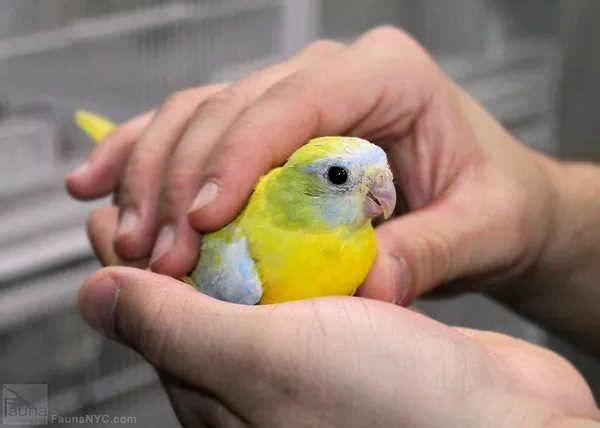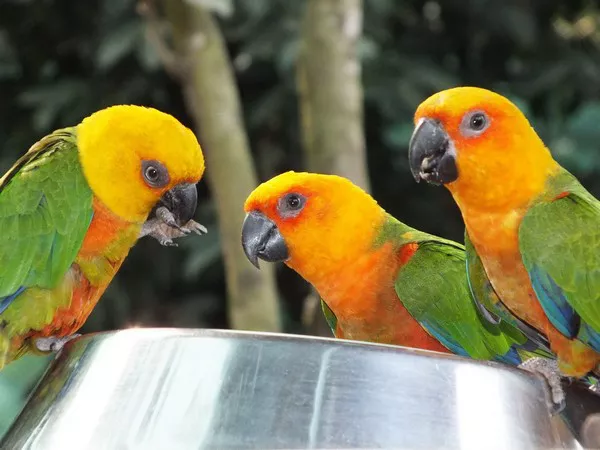African Gray Parrots, renowned for their intelligence, striking plumage, and captivating personalities, have the ability to form deep and affectionate bonds with their human caregivers. While their expressions of affection may differ from those of more traditional pets, understanding how African Grays demonstrate their love and attachment is essential for nurturing a strong and rewarding relationship with these extraordinary birds. In this guide, we will explore the various ways African Grays show affection and how you can strengthen the bond with your feathered companion.
Vocalizations and Mimicry
African Gray Parrots are celebrated for their remarkable vocal mimicry skills. When they are fond of someone, they often express their affection through speech and sounds. Here’s how they do it:
Imitating Your Voice: African Grays may imitate your voice or the voices of others in your household. This mimicry is a way of showing that they are comfortable and feel a strong connection with you.
Endearing Nicknames: If your African Gray starts calling you by a special name or nickname, it’s a sign of their affection. They may develop their own unique vocalizations that are reserved just for you.
Purring and Whistling: Some African Grays produce soft purring sounds or melodious whistles when they are content and feel close to their human companions.
Conversational Engagement: Engaging in conversations with you, even if the words are repetitive, indicates their interest and affection. They love the interaction and the bond it fosters.
Physical Affection
While African Grays may not enjoy physical contact to the same extent as dogs or cats, they do have their own ways of showing physical affection:
Head Scratching: Many African Grays enjoy gentle head scratches. When your parrot leans into your fingers or lowers its head for a scratch, it’s a clear sign of affection.
Wing Stretching: If your parrot extends one wing while perched on your finger or shoulder, it’s a gesture of trust and affection.
Beak Nuzzling: African Grays may gently nuzzle or tap your face or hands with their beaks. This behavior signifies closeness and attachment.
Playfulness and Engagement
African Grays are highly intelligent birds that require mental stimulation and play. Their playful behaviors can be a way of expressing their affection:
Sharing Toys: If your parrot brings you toys or objects to play with, it’s a sign that they want to engage and bond with you through play.
Interactive Games: African Grays enjoy interactive games like peek-a-boo, fetch, and hide-and-seek. Playing these games with them strengthens your connection.
Allopreening: In the wild, parrots often groom each other as a sign of trust and affection. If your African Gray starts grooming your hair or clothing, it’s a sign of bonding.
Perching Close
African Grays are social birds that enjoy being close to their human companions:
Shoulder Perching: When your parrot perches on your shoulder, it’s an indication of trust and comfort. They want to be near you and part of your daily activities.
Following You: If your African Gray follows you around the house or room, it’s a sign of attachment. They enjoy your company and want to be with you.
Body Language and Signals
Understanding your African Gray’s body language is essential for recognizing their affection:
Dilated Pupils: Dilated pupils can be a sign of excitement and affection. When your parrot’s pupils expand in your presence, it indicates positive emotions.
Feather Fluffing: A parrot that fluffs up its feathers while perched near you is likely content and relaxed, a sign of affection.
Tail Position: A relaxed, slightly fanned tail is a positive sign. A raised tail can indicate excitement and happiness.
Conclusion
African Gray Parrots are complex and intelligent creatures that express affection in their unique ways. By recognizing and responding to their signals, you can build a strong and loving bond with your feathered companion. Remember that each African Gray is an individual with its own preferences and personality, so take the time to get to know your parrot’s specific cues and behaviors. In return, you’ll enjoy a rewarding relationship filled with affection, trust, and companionship that can last a lifetime.
Recommended reading:
























